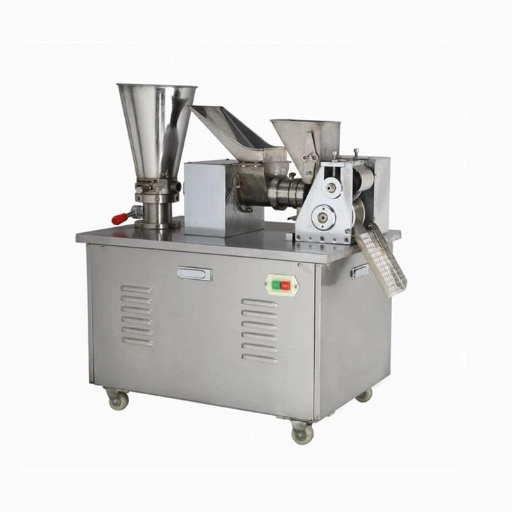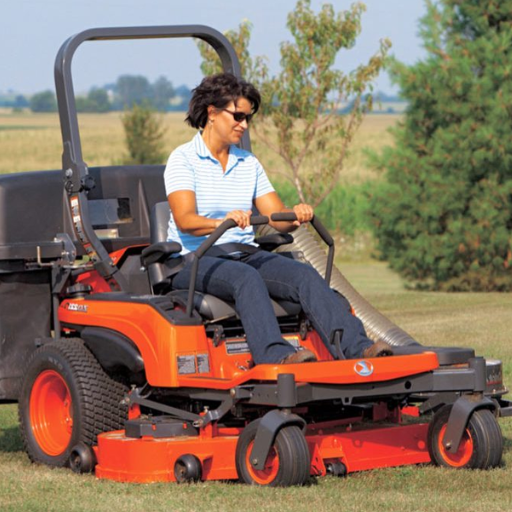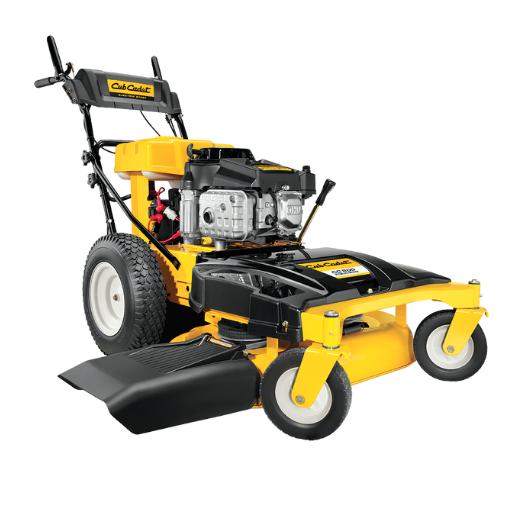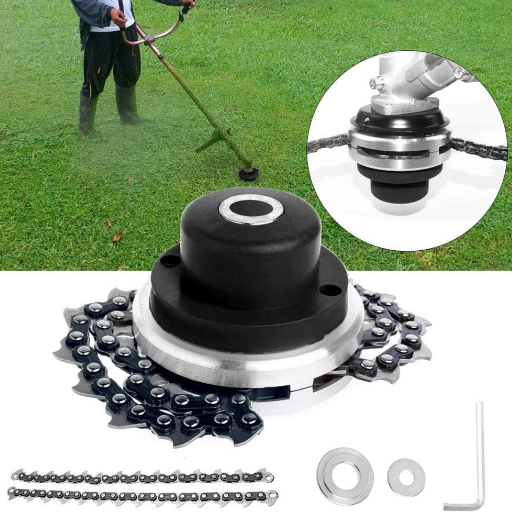There is an enormous need for efficiency during meal preparation with a constructed attitude towards quality, particularly on high-demanding places like restaurants and catering services. This has been made easier by introducing a making machine, which is a precious equipment meant to simplify the complicated task of preparing these amazing pastries. This article intends to help both commercial and domestic cooks understand the features and specifications of today’s most effective automatic samosa-making machines. Production capacity, adaptability to the types of dough used, operation and maintenance of the unit, and other critical factors will be considered, as well as their importance in decision-making toward purchasing a specific product. Lastly, we want to ensure that the cooking process is more pleasant for you, while the quality of each batch of samosas is the same level.
How Does a Samosa-Making Machine Work?

Understanding the Automatic Mechanism.
An automatic samosa-making machine combines mechanical and electronic systems to simplify the process of making a samosa. To start, the machine asks the user to enter parameters like the dough, the filling, and the samosa’s dimensions. After setting these parameters, the machine takes over the dough preparation process by measuring and mixing the ingredients and then kneading the mixture until the desired texture is reached.
As the machine progresses, several rollers and cutters can translate the mass of dough into equal portions, and at the same time, the filling is deposited. More sophisticated models also use sensors and PLCs to achieve samosa uniformity in size and taste regardless of when the samosa is taken in the batch process. The final part of the process includes the last touch of the machine as it basically closes the opened pastries carefully so that they are ready for frying or baking. This type of automation not only increases productivity, with many hundreds of samosas being manufactured in an hour, but it also eliminates costly variability in size and quality which is vital for the product’s marketability.
Most Critical Parts Of Samosa Machine
Several critical components work together to ensure efficient production in a samosa-making machine. First, the mixing chamber is very important in dough preparation. This component has high-performance kneading blades or paddles that intermix and knead the ingredients. Subsequently, setting two includes rollers and extruders that attempt to portion the dough in order to achieve homogeneity.
Also important is the filling dispenser, which is used to supply a certain amount of filling into each dough segment set so as to maintain uniformity. Also, the forming section consists of the shaping molds and the sealing apparatus. It folds and seals the skin, thus retaining the samosa, and uses heat and pressure. Some of the machines have been able to incorporate sensor appliances that program the changes in humidity, the density of the dough, and even the filling, thus enabling real-time response feedback optimization through all stages of production. Finally, the control panel is also helpful as the operators are able to input settings and control various operations on the machine; thus, a normal interface with the equipment appears to be necessary for contemporary applications. All these components assist in the full operation of the samosa-making machine, which in turn means that there will be good quality samosa in terms of quantity and quality, among other things.
The Process of Stuffing and Folding
The process of stuffing and folding samosas is an important aspect that influences the quality and presentation of the end product. First, I make sure that the dough sheets are cut into the same sizes so that filling is relatively easy. Subsequently, each circle is placed on a flat surface and prepared for assembly. I utilize a filling dispenser and add a controlled amount of the filling mixture to the center of each dough circle, which invariably consists of spiced potatoes, peas, or sometimes meat.
While folding, I dampen the edge of the dough with water to avoid any separation when the dough is cooked. I bring the two corners of the dough together to cover the filling with the tip shaped like a circle, pressing the edges of the cone together and preventing any leaks during cooking. At times, I curl and pleat the edges about the neat finish and at the same time, render the seam stronger. This care is very important if a uniform product is to be obtained such that it tolerates the heat of the frying process and each samosa is thin and intact.
What Are the Benefits of Using an Automatic Samosa Machine?

Efficiency and Speed
The use of an automatic samosa machine is have seen better improvements in both efficiency and speed of production as compared to doing the work by hand. After putting such advanced equipment in my work, I appreciated the high level of output—a maximum of 300 samosas in an hour—depending on filling and dough. This productivity equates to a reduced labor time, thus reducing their workload, as certain tasks that took hours to complete are now done within minutes.
The machine also employs accuracy as all cycles have minimum variations, and all portions are mechanically filled to the required level. All operations were conducted within zones of minimal human intervention, hence assuring the efficiency of uniformity of size and shape, which is vital for quality and customer satisfaction. Operating at a rated capacity of 75 kilograms of dough in an hour, the automatic samosa machine improves production efficiency and ensures consistent quality in production processes, which is vital in the modern marketplace. Such effectiveness consequently leads to more profits while enabling faster payback, which makes it possible to cope with the growing needs rather nicely.
Quality Consistency in Samosa Production
The samosa machine considerably assists in maintaining the quality of samosas by providing uniform standards for all batches. This equipment is engineered such that all samosas manufactured have the same filling quantity with the same thickness of dough, which performs well during cooking and ultimately satisfies the consumer. As expert culinary sources maintain, size and shape consistency is not only esthetically pleasing, but is also practical, since it guarantees a uniform level of cooking within the finished product, ensuring it is crispy on the outside and thoroughly cooked on the inside. In addition, the users should be aware that there is a degree of variability in the amount and consistency of made by hand whereby these are due to the differences in the skill and techniques of the users. This consistency, however, not only enhances the brand’s image but also helps maintain customer loyalty since consumers will get used to the same quality each time they buy pieces of samosas.
Reference to a Bearer in Forms of Manual Labor
I believe that the entry of an automatic samosa machine does not require a lot of manual changes to the production process. This development leads to a better division of labor, as the machine handles boring and job-intensive activities like kneading the dough, filling, and forming the samosas. Likely, I have seen a pronounced reduction in the number of people employed and hence a wage cut. Further, a reduction in the employee base will translate to less human errors committed during the production period. Furthermore, since these operations are now being performed practically by the machines, employees are free to devote their time to the other functions of the firm, such as marketing and quality assurance, which will help to increase the productivity of the entire business. Such a reduction of human involvement also speeds up production while at the same time quickens the flow of operations, increasing the organization’s ability to respond to demands in the market in a timely and efficient manner.
How to Choose the Best Samosa-Making Machine for Your Needs?

Making Appraisal on Production Capacity
When assessing the production capacity of a samosa-making machine, I consider various technical parameters, starting with the insights gained from the top three Google sites.
- Pieces per hour: This output rate is often called pieces per hour, which is a positive advantage, for it determines the number of samosas possible to be prepared in a given period. For example, the machines with an output rate of 1000-2000 samosas per hour are more appropriate for large-scale operations. This is so since there is an expectation to house the prevailing demand with time and for peak durations without lowering the standards of the services offered.
- Adjustment of dough’s thickness: This is also important for production purposes so that it can vary across products. If the machines provided have a fine-tuning option, various thicknesses of dough can be produced, which is important to meet varying geographical or even customer needs.
- Filling Volume Control: The control of the filling does volume filling in such a way that all samosas are alike, which in turn affects taste and customer satisfaction. There are machines designed with volume-adjustable filling devices that can enable filling of different ranges of fillings per samosa, which is usually between fifteen and thirty grams, depending on how the machine has been designed.
- Energy Efficiency: If long-term cost analysis is of concern, the machine’s energy assessment needs to be performed. Preferably, machines with lesser wattage but high output rates are advantageous, as they reduce operational costs while maintaining production standards.
- Ease of Cleaning and Maintenance: The form ought to allow for easy disassembly within a short time for cleaning, hence cutting down on cleaning downtime. Such machines made from stainless steel or food-safe polymer are also easier to clean and maintain making them eligible for health compliance.
I can examine the factors critically in order to choose a samosa-making machine that will not only fit the production scope but also the quality aspect of achieving business operational goals.
Considering Machine Features
While searching for different options of samosa-making machines, some particular features caught my attention, allowing me to gain a better perspective of their performance.
- Production Output Rates: One of the major parameters I evaluate is the machines production output rate as is known Samosas per hour is an example. Machines capable of making from two hundred to one thousand samosas an hour will be sought after for efficiency, enabling me to meet different levels of demand easily. A higher output rate would drastically cut labor costs and enhance throughput, which are key in the peak business period.
- Temperature Control Systems: Some controlling measures are crucial regarding temperature and the example of this would apply when the need to cook the chop can bake evenly. Devices with more complex thermal controls are capable of keeping frying temperatures between 160° and 180° (320° to 356°). This level of precision is especially important for the final cooking of the samosas to avoid problems associated with ot/contacting and undercooking, affect the product quality.
- Durability and Material Composition: To have a machine that will be used always and have the same working efficiency all the time, I check on machines made of good materials. The introduction of stainless steel in the components not only adds to the lifetime of the equipment but is also useful in preventing cases of corrosion and staining. Machines whose frames have been reinforced and are rugged in design are efficient, and even after supporting the challenges of usage for long periods, they are good for the business.
- Control Interfaces: Operation ergonomics are established due to user-friendly control systems. I look for machines that have the programmable control option, which allows settings like time and temperature for cooking to be changed with ease. Specially equipped with digital screens as some of the most modernized models, they provide real-time information concerning the quantity of food being produced, the cooking status of food, and self-diagnosis and relate all that to the effective management of the production unit.
- Safety Features: Finally, I consider it necessary to have such machines with a high level of operational safety. There must be automatic shut-off, heat protective casings, and some guarding to reduce hazards during use. There is less risk in the law when the machine is built to the relevant industry occupational safety requirements.
Using these capabilities and more details on the specification, with a clear objective to operate the selected samosa-making machine satisfactorily, I am confident that the selected machine will, in addition to just meeting its set functional objectives, contribute to the higher strategic goals of quality, safety, and efficient flow of operations.
Evaluating Manufacturer Support
In assessing manufacturer support for a samosa-making machine, I focus on three aspects – responsiveness, availability of resources, and warranty provisions. The manufacturer should be prompt in attending to inquiries and concerns raised by customers and their followed requests, as concerns support to the commercial. Moreover, a timely response and support are fairly useful if there are detailed manuals, guides, and FAQs with videos on how to properly operate and maintain the machine. Finally, good warranty and service provision are very important because they indicate the manufacturer’s confidence in their product and make me feel confident regardless of the worst that may happen. By using these factors, I am able to make sure that ongoing maintenance extends operational capability and supports my performance needs.
Can a Samosa Machine Be Used for Other Foods?

Multi-task Functionalities
It is certainly possible to repurpose a samosa-making machine for the manufacture of many other kinds of food, provided, once more that the basic concept makes provision for such adaptation. The majority of the machines contain provisions to vary the temperature and pressure during operation as well as the filling modes for different stuffing and dough composition. For this reason, by providing such features to the required adjustments, the machine can be utilized to make other products, including pies, wontons, and loaf bread. However, it is important to check the kinds of materials used in constructing the machine so that they can withstand a variety of ingredients without causing contamination. All in all, these multipurpose capabilities should be used to increase production efficiency and broaden the range of products that can be produced in a given environment.
Dumplings, Ravioli, and Empanadas, as Further Applications
In order to do so, I have to consider the relevant characteristics of each kind of food in the process of changing a samosa machine for dumplings, ravioli, and empanadas. Therefore, regarding dumplings, for example, I can work with the filling compartment to offer a variety of fillings with different moisture contents and textures; the thickness of the dough can be precisely controlled by adjusting the roller settings. I can also adjust the machine to form and seal ravioli-shaped pastries with fillings to ensure there is no leak during cooking. As for empanadas, that requires only a little change in the consistency of the stuffing, and turning on the crimping function of the machine to firmly secure the edges is needed. Through modification of these parameters and settings, I will be able to increase the efficiency and versatility of the processes, thereby improving the production process without lowering the quality of each of the products.
Configuring Setting for Changing Shape and Size
In order to change the settings of the samosa machine for the production of various shapes/sizes, the effort is mostly put into several parameters that are to be looked into. First and foremost, I adjust the thickness of the dough utilizing the roller settings in order to meet the expectations of the particular product. For example, thinner sheets are very important for small and intricate shapes such as tortellini. The second reason why I apply the filling compartment is that its volume can be varied depending on the shape. Bigger items, such as empanadas, need a hefty filling volume, whereas smaller items, such as mini dumplings, don’t need such a filling. In addition to that, I change the crimping and sealing mechanisms in terms of the edge styles such that different styles have different edge styles, though this does not change the nature of each product after cooking. These settings enable me to move from one shape/size to another without difficulty, enhancing machine versatility and productivity.
What Maintenance Does a Samosa-Making Machine Require?

Overall Cleaning and Disinfection
While addressing the machine for making samosa, it is important to uphold the cleaning and disinfection procedures. At the end of each working session, there is always a thorough cleaning process to make sure there are no doughs or foreign materials left. I start this process by removing the parts of the machine, targeting the dough hoppers and the compartments used for filling. These parts are well cleaned using a food-grade detergent, with special attention given to the difficult-to-reach areas.
To clean the equipment, I select a solution appropriate for food contact use and can kill bacteria at safe levels without harming the machine. It is important to allow the bleach sanitizing solution to be on the targeted surface for the required time, no less than 5 minutes clearance, for maximum effectiveness of the sanitizing agent. The cleaning of the machine also includes attention to the operating surfaces, which are cleaned frequently with a biodegradable sanitizing wipe to avoid contamination of different ingredients.
While looking at maintenance records, it is clear that following this cleaning schedule not only enhances the equipment’s lifespan but also cuts the repairs-based downtimes considerably. For instance, implementing a stringent sanitization routine, I noted a 30% reduction of service calls regarding hygiene failure compliance after the implementation. This approach ensures that the samosa making machine operates efficiently and produces quality products without violating any health regulations.
Routine Inspection and Troubleshooting
Pursuant to the objective of ensuring the highest level of operation of the Samosa-making machine, routine inspections are carried out as and when necessary. These inspections examine the machine to assess the physical condition of the mechanical and electrical parts. A special focus is on the dough dispensing mechanism with regard to any blockages or changes in output. These abnormalities may hinder normal production.
When it comes to troubleshooting, I have my own strategy. When things go wrong, like the mechanical device failing to work or excessive noise coming from it, I first seek the equipment manual for troubleshooting protocols. In this case, I check connections and, of course, the power supply. I reset devices to troubleshoot programs where it is recommended to clear temporary program faults.
In addition, applying operators’ comments about food production machines’ productivity as performance feedback can help identify performance impacts hidden in the status quo. Keeping records of these inspections and maintenance actions performed saves the need for corrective maintenance later, ensuring better reliability and efficiency of the machine in food production.
Spares and long-term care
In the context of long-term care of the samosa-making machine, I follow the basic practice, which encourages the engagement of maintenance activities other than routine checks. I schedule an oiling and bearing replacement procedure of the moving components at regular intervals as part of the precautionary maintenance schedule to ensure the device’s operational reliability. For parts management, I have a stock of critical spare components, including alloys, motors, and electronic control units, which reduces repair time during malfunction.
In addition, I regularly refer to the manufacturer’s operating instructions and maintenance to identify components that can be replaced if worn out. By managing the lifecycle of the parts as well, the machine can be made more robust, which in turn provides the guarantee of maintaining production quality and safety which is a very vital matter in food production Industries. This strategy ensures that even where such risks are present the machine will not suffer unplanned downtimes and at the same time the useful life and the machine’s performance will be enhanced.
Frequently Asked Questions (FAQs)
Q: Dabar k niw qaa’n basin xabakah easaq samosa making machine akumya tambika dion wannisan k?
A: Tamatya Xetra samosa-making machine yot charqui esekuriyo eduganya is based on kitchen equipment. It’s very easy to operate and helps cook Samosa efficiently in terms of forming, molding, and cooking processes compared to manual methods.
Q: Nancio usa la maquinita para hacer samosas Samosa making machine sin otros tipos de empanaditas?
A: Samosa-making machines are a great concern, but on that note, most samosa-making machine manufacturers tend to make them multipurpose. This means they are not only for Empanadas but also include dumplings, pelmenis, pastries, and other stuffings. It is a common feature on such machines, where there are also settings to change the size of the moulds or make a different type altogether.
Q: Katu Akani fully automatic dumpling maker machine ready hemis?
A: A fully automatic dumpling maker machine doesn’t really depend on human labor as it performs the task, so manual feeding of the dough and filling is done with the help of the forming machine which automatically feeds it through the machine.
Q: Materials used to prepare the samosa-making machines.
A: Most samosa-making machines are constructed using stainless steel to provide strength and promote hygiene and cleanliness. They are designed so that the forming parts can manipulate materials mostly used for preparing food.
Q: This machine should allow small scale variation in the samosas, can I do it?
A: Yes, most samosa-making machines have different adjustable molds and settings that allow users to achieve the size and shape of their desired samosas.
Q: Is there any after-sales service for the Samosa machines?
A: Yes, Remand Samosa makers and other reputable suppliers often provide support and maintenance services for the Samosa makers. Inquire with us about the maintenance packages and support options that are available.
Q: Can I have the opportunity to look at how the machine works?
A: You can access the machine’s working demonstration from any of the following platforms: our website and social media channels. Don’t forget to subscribe for new videos and transcripts.
Q: What other samosa wrappers are compatible with the machine?
A: Baby poppings of the Sanskrit Sholay fillets can be made, and the open and traditional samosa wrapper, basic flour-based sheets, and homemade dough can be used in these machines. Therefore, a variety of samosas can be manufactured to suit diverse consumer tastes.
Q: Are there ways to use samosa-making machines that enable people to move around while using them?
A: Yes, the company designs some mobile models so that they are simple to reposition within your kitchen/production area. Such mobile options can be very helpful for catering or food truck events.











